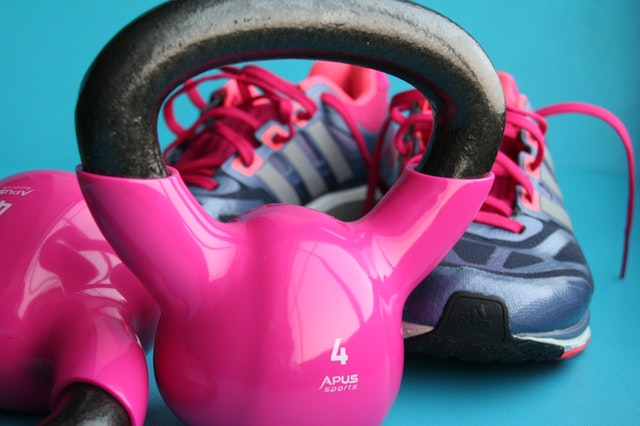This post may contain affiliate links. Please read the disclaimer for more info.
My Experience
I’ve been curious about this question for years, it’s about time I find my answer to it. It certainly took some looking being that many of the sources you’ll hear from sound biased.
Both in life and online, all I’ve ever gotten from physical therapists and doctors is that I need to strengthen everything. Being that I’ve had a major surgery in my elbow, a major collision to my heel, among other leg breaks and ankle sprains, this doesn’t feel like the universal answer.
Besides, the strength training in physical therapy never made me feel better. I still have pain in my elbows today from that surgery and I have to limit how much rock climbing I do.
Also, my recent heel injury has been more or less solved with most of my efforts focused on combating the tightness in my legs, rather than the weakness.
Addressing Tightness
So because the given “experts” usually point to strength work, I like to look around for other theories. One place that has yet to fail me is Dr. Kelly Starrett and more specifically his book, Becoming a Supple Leopard. Here is the line that literally sold me the book:
Those factors that account for 2 percent of the dysfunction in a typical gym:
Pathology (something serious is going on with your system)
Catastrophic injury (you got hit by a car)
Those factors that account for 98 percent of the dysfunction in a typical gym:
Overtension (missing range of motion)
Open-circuit faults (moving in a bad position)
He goes on to say, “Put simply, you’re missing normal ranges of motion as a result of your tight tissues.”
If that wasn’t clear, let me rephrase that – 98% of dysfunction is from tightness and poor technique.
Nowhere does he mention strength being an issue. Take into account the fact that Kelly is a big proponent of CrossFit and doesn’t discount the fact that strength can be important, but in terms of dysfunction (injuries), he’d probably tell you that you’re not weak, you’re just tight.
Becoming a Supple Leopard is a wealth of knowledge for anyone looking to get better performance out of their body or resolve pain points that are still bothering them. It has helped me understand a lot about why the body gets tight and what we can do to treat it better and stay out of pain with actionable steps.
But remember, your tight tissues are limiting your range of motion. That means we don’t just want to start stretching, we want to release the tissue (aka fascia) around those restricted muscles. This is what will allow us to have a further range of motion; using myofascial release to break up the adhesions in our muscle tissue that are sticking to our muscles and keeping them from sliding smoothly and moving optimally.
Use something like a foam roller or a firm massage ball to press into tight areas and break up that tight tissue. For some direction on where your pain might be stemming from, Kelly says,
If you have ankle pain, chances are good that your calves are tight and are pulling on your ankles, limiting your range of motion. If you have knee pain, chances are good that your quads, hips, hamstrings, and calves (all the musculature that connects to your knee) are brutally tight.
What About Weakness?
So is weakness ever the cause of dysfunction? From what I have gathered, the answer is no or at least not entirely.
For example, some people who experience pelvic tilt issues classify it as a matter of tightness and weakness. A commonly accepted theme is that your hip flexors and back extensors are too tight while your abdominals and glutes are too weak.
The problem with this idea, although the muscles have become weak, is that the tight muscles must be remedied first because they won’t even allow the weak muscles (abs and glutes) to operate in a strong position so they can’t reach their full strength. As Kelly puts it,
It’s no mystery why you have pain: You can’t get into the correct positions or move with good form because you’re missing key ranges of motion.
When you are missing range of motion in certain muscles (hip flexors and back extensors) it will hinder the ability of the muscles around it as well (abs and glutes). My conclusion is that injuries are caused by tightness. If you are tight and weak, you need to work on your tightness first so your body can gain the range of motion to get into the proper positions to address its weakness.
Poor Positioning
The other huge proponent of injuries is actually poor positioning, not weakness. This means moving, generating force, and taking impact with poor technique or poor posture (rounded back, collapsed knees and ankles).
This is the category for most of the serious athletic injuries like torn ACL’s and torn achilles tendons. When you move with poor positioning, you put your body at risk for serious injuries like these regardless if your body is free of tightness or weakness. In his book again, Kelly states,
If you’re missing ankle range of motion, you have no choice but to compensate into an open-foot position, meaning that you stand, walk, run, and move with open knees and collapsed ankles. If you’re missing foot extension or dorsiflexion, you’re going to turn your feet out to solve that range of motion problem and buffer the issue. Do this and ultimately say hello to bone spurs, Achilles tendonitis, Achilles ruptures, and a slate of other ankle problems.


Leave a Reply